MaryAnn Bernal's Blog, page 280
May 19, 2014
Tomb raider: enter the British Museum's underground mummy store
From Edgar Allan Poe to Scooby Doo, culture is cursed with the ancient Egyptian dead. Jonathan Jones visits the British Museum's mummy store to unwrap our fascination
Jonathan Jones
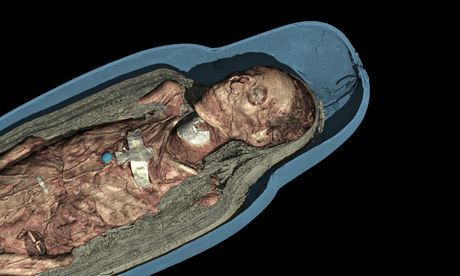
Living for ever … a CT scan 3D visualisation of the mummified remains of Tayesmutengebtiu, also called Tamut (detail). Photograph: Trustees of the British MuseumIt was a couple of days after I visited the mummy store that my nightmares began. Bandaged bodies on shelves. A loose wrapping, perhaps about to uncoil further as the corpse within awoke from its 3,000-year sleep. Most of all, the painted face of a young man gazing untiringly into darkness as the curator turned out the lights behind us and firmly locked the door.
Hidden in the heart of the British Museum, deep within a labyrinth of research departments the public never sees, is a secret world of the dead. This museum, whose collections blossomed in the age of empire when Egypt was under British control, owns more than 100 mummies. Many are on permanent display. Eight were taken to hospital to undergo CT scans for the museum's revelatory new exhibition Ancient Lives. Others lie here, on wooden pallets, layered one over the other, in London's most enigmatic morgue.
The room doesn't need to be especially cold – the mummies were embalmed millennia ago, their brains and organs removed to prevent internal decay – but it does have a carefully regulated temperature that suits the fragile dead. Their casings, too, are organic and need care: linen wrappings, wooden coffins. One of the coffins dates from about 3,000BC – older than the pyramids – and is just a timber crate. Later ones are painted in styles from Old Kingdom to Roman, laden with hieroglyphic spells.
Why are mummies spooky? Why are horror stories told about them and why do Scooby Doo scenarios come to mind when you see them in a museum? I'd love to pretend that I was too interested in proper archaeology to waste time on such stuff, but I really did have nightmares after visiting the mummy store. And they got me thinking about what mummies really are: vehicles of immortality.
It's amazing that any Egyptian mummies have survived to be preserved in the British Museum. Over the centuries, thousands have been destroyed through superstition and morbid curiosity. In the 18th century, "mummy", the powdered flesh and bone of the ancient Egyptian dead, was swallowed as medicine. Even when a growing fascination with Egypt made this seem wasteful, things got little better, for public unwrappings of mummies became all the rage. Invaluable archaeological evidence was destroyed for cheap thrills.
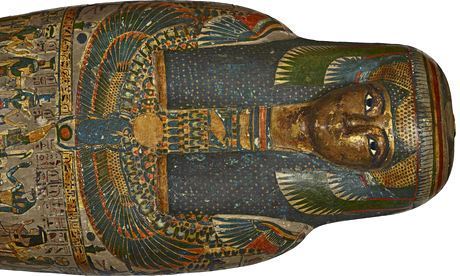 Cartonnage of a priestess, named Tayesmutengebtiu, found in Thebes, 22nd Dynasty. Photograph: Trustees of the British Museum. Then the horror stories began. The 19th-century writers Theophile Gautier, Edgar Allan Poe and Bram Stoker all wrote eerie tales about mummies, but it was Arthur Conan Doyle, creator of Sherlock Holmes, who hit on the perfect formula of the revived mummy in his story Lot 249. Soon the 1932 Boris Karloff classic The Mummy launched the pharaonic dead on their fantastic film career.
Cartonnage of a priestess, named Tayesmutengebtiu, found in Thebes, 22nd Dynasty. Photograph: Trustees of the British Museum. Then the horror stories began. The 19th-century writers Theophile Gautier, Edgar Allan Poe and Bram Stoker all wrote eerie tales about mummies, but it was Arthur Conan Doyle, creator of Sherlock Holmes, who hit on the perfect formula of the revived mummy in his story Lot 249. Soon the 1932 Boris Karloff classic The Mummy launched the pharaonic dead on their fantastic film career.
Is all this a depressing insight into our vulgar souls and inability to be interested in the remote past unless it is turned into cheap fiction? No. The gothic imagination feasts on mummies for a good reason. They are genuinely uncanny: the closest that humanity has come to conquering death.
Ancient Egyptians wanted to live for ever. Almost all the Egyptian art and artefacts in museums are part of an effort to achieve this. False doors from tombs – the British Museum has a majestic one painted red that resembles a massive stone Mark Rothko painting – are portals through which the ka, or spirit double, of the deceased person could come to receive food offerings. The models of people brewing beer that were put in tombs were intended to provide actual beer for the living dead.
Everything important in a tomb, from small sculpted servants to the mummy itself, was touched with an adze by a priest in a ritual called "the opening of the mouth". This rite gave magical potency to everything the ka would need in the next life – and its needs included the mummified corpse. The reason for perfectly preserving the corpse was so that its ka could recognise it, and so connect with it to enjoy the food and drink the mummy digested on its behalf.
Spirit and body were mysteriously connected. It's not that Egyptians believed that the mummy could get up and chase people round museums – but they did believe that the dead person's spiritual ka form, which needed the mummy to exist, could leave the tomb and walk around. There are statues of it doing just that.
So what? People believe all kinds of things. But the ancient Egyptians believed in their conquest of death for at least 3,000 years and repeated their spells and rituals over and over again. Their art is incredibly powerful because it is full of the confidence and faith of those rituals. It is truly magical art. Looking at the painted caskets in the mummy store I am moved by the conviction they communicate that death is not the end, but only the beginning of a strange adventure.
The door closes. The eternal night of the tomb returns. The young man's painted face looks calmly into the eyes of his ka.
• Ancient Lives: New Discoveries is at the British Museum, London WC1, until 30 November. Tickets: 020-7323 8181.
http://www.theguardian.com/artanddesign/2014/may/19/ancient-lives-new-discoveries-egyptian-mummies-british-museum

Jonathan Jones

Living for ever … a CT scan 3D visualisation of the mummified remains of Tayesmutengebtiu, also called Tamut (detail). Photograph: Trustees of the British MuseumIt was a couple of days after I visited the mummy store that my nightmares began. Bandaged bodies on shelves. A loose wrapping, perhaps about to uncoil further as the corpse within awoke from its 3,000-year sleep. Most of all, the painted face of a young man gazing untiringly into darkness as the curator turned out the lights behind us and firmly locked the door.
Hidden in the heart of the British Museum, deep within a labyrinth of research departments the public never sees, is a secret world of the dead. This museum, whose collections blossomed in the age of empire when Egypt was under British control, owns more than 100 mummies. Many are on permanent display. Eight were taken to hospital to undergo CT scans for the museum's revelatory new exhibition Ancient Lives. Others lie here, on wooden pallets, layered one over the other, in London's most enigmatic morgue.
The room doesn't need to be especially cold – the mummies were embalmed millennia ago, their brains and organs removed to prevent internal decay – but it does have a carefully regulated temperature that suits the fragile dead. Their casings, too, are organic and need care: linen wrappings, wooden coffins. One of the coffins dates from about 3,000BC – older than the pyramids – and is just a timber crate. Later ones are painted in styles from Old Kingdom to Roman, laden with hieroglyphic spells.
Why are mummies spooky? Why are horror stories told about them and why do Scooby Doo scenarios come to mind when you see them in a museum? I'd love to pretend that I was too interested in proper archaeology to waste time on such stuff, but I really did have nightmares after visiting the mummy store. And they got me thinking about what mummies really are: vehicles of immortality.
It's amazing that any Egyptian mummies have survived to be preserved in the British Museum. Over the centuries, thousands have been destroyed through superstition and morbid curiosity. In the 18th century, "mummy", the powdered flesh and bone of the ancient Egyptian dead, was swallowed as medicine. Even when a growing fascination with Egypt made this seem wasteful, things got little better, for public unwrappings of mummies became all the rage. Invaluable archaeological evidence was destroyed for cheap thrills.
 Cartonnage of a priestess, named Tayesmutengebtiu, found in Thebes, 22nd Dynasty. Photograph: Trustees of the British Museum. Then the horror stories began. The 19th-century writers Theophile Gautier, Edgar Allan Poe and Bram Stoker all wrote eerie tales about mummies, but it was Arthur Conan Doyle, creator of Sherlock Holmes, who hit on the perfect formula of the revived mummy in his story Lot 249. Soon the 1932 Boris Karloff classic The Mummy launched the pharaonic dead on their fantastic film career.
Cartonnage of a priestess, named Tayesmutengebtiu, found in Thebes, 22nd Dynasty. Photograph: Trustees of the British Museum. Then the horror stories began. The 19th-century writers Theophile Gautier, Edgar Allan Poe and Bram Stoker all wrote eerie tales about mummies, but it was Arthur Conan Doyle, creator of Sherlock Holmes, who hit on the perfect formula of the revived mummy in his story Lot 249. Soon the 1932 Boris Karloff classic The Mummy launched the pharaonic dead on their fantastic film career.Is all this a depressing insight into our vulgar souls and inability to be interested in the remote past unless it is turned into cheap fiction? No. The gothic imagination feasts on mummies for a good reason. They are genuinely uncanny: the closest that humanity has come to conquering death.
Ancient Egyptians wanted to live for ever. Almost all the Egyptian art and artefacts in museums are part of an effort to achieve this. False doors from tombs – the British Museum has a majestic one painted red that resembles a massive stone Mark Rothko painting – are portals through which the ka, or spirit double, of the deceased person could come to receive food offerings. The models of people brewing beer that were put in tombs were intended to provide actual beer for the living dead.
Everything important in a tomb, from small sculpted servants to the mummy itself, was touched with an adze by a priest in a ritual called "the opening of the mouth". This rite gave magical potency to everything the ka would need in the next life – and its needs included the mummified corpse. The reason for perfectly preserving the corpse was so that its ka could recognise it, and so connect with it to enjoy the food and drink the mummy digested on its behalf.
Spirit and body were mysteriously connected. It's not that Egyptians believed that the mummy could get up and chase people round museums – but they did believe that the dead person's spiritual ka form, which needed the mummy to exist, could leave the tomb and walk around. There are statues of it doing just that.
So what? People believe all kinds of things. But the ancient Egyptians believed in their conquest of death for at least 3,000 years and repeated their spells and rituals over and over again. Their art is incredibly powerful because it is full of the confidence and faith of those rituals. It is truly magical art. Looking at the painted caskets in the mummy store I am moved by the conviction they communicate that death is not the end, but only the beginning of a strange adventure.
The door closes. The eternal night of the tomb returns. The young man's painted face looks calmly into the eyes of his ka.
• Ancient Lives: New Discoveries is at the British Museum, London WC1, until 30 November. Tickets: 020-7323 8181.
http://www.theguardian.com/artanddesign/2014/may/19/ancient-lives-new-discoveries-egyptian-mummies-british-museum

Published on May 19, 2014 04:57
History Trivia - Anne Boleyn, the second wife of Henry VIII of England, beheaded
May 19

715 Gregory II was elected Roman Catholic pope.

804 Alcuin of York, English scholar, died in Tours France. He was welcomed at the Palace School of Charlemagne in Aachen where he remained during the 780's and 790's.

988 Dunstanus, English archbishop of Canterbury, died.
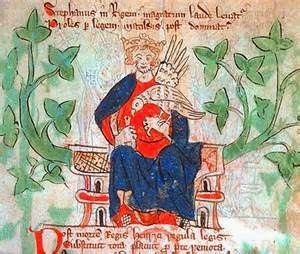
1102 Stephen II, Count of Blois, the father of Stephen of England, died.

1499 Catherine of Aragon (age 13), was married by proxy to Arthur Tudor (age 12), Prince of Wales.
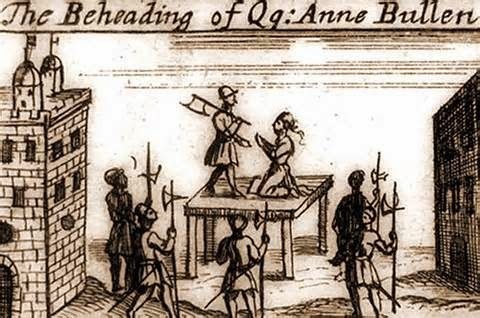
1536 Anne Boleyn, the second wife of Henry VIII of England, was beheaded for adultery, treason, and incest.
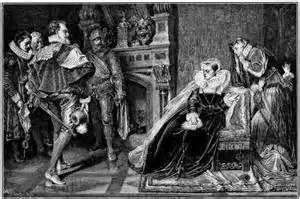
1568 Queen Elizabeth I of England ordered the arrest of Mary, Queen of Scots.


715 Gregory II was elected Roman Catholic pope.

804 Alcuin of York, English scholar, died in Tours France. He was welcomed at the Palace School of Charlemagne in Aachen where he remained during the 780's and 790's.

988 Dunstanus, English archbishop of Canterbury, died.

1102 Stephen II, Count of Blois, the father of Stephen of England, died.

1499 Catherine of Aragon (age 13), was married by proxy to Arthur Tudor (age 12), Prince of Wales.

1536 Anne Boleyn, the second wife of Henry VIII of England, was beheaded for adultery, treason, and incest.

1568 Queen Elizabeth I of England ordered the arrest of Mary, Queen of Scots.

Published on May 19, 2014 04:53
May 18, 2014
Meet Rex - a bully survivor whose story is being told in the novel, Ty the Bull, a new release coming soon
 About The Book Ty the Bull is about fighting against adversity. Not just letting people hurt you but protecting yourself in an humane way. This is an age old problem and effects people of all ages but children seem to be hurt the worst. It also touches on divorce which is becoming more and more commonplace. The struggles a child must go through for survival. Childhood should be a time for exploration and fun adventures but it seems to be filled with more obstacles than ever. http://tythebull.blogspot.com/ Rex's custom bracelets
About The Book Ty the Bull is about fighting against adversity. Not just letting people hurt you but protecting yourself in an humane way. This is an age old problem and effects people of all ages but children seem to be hurt the worst. It also touches on divorce which is becoming more and more commonplace. The struggles a child must go through for survival. Childhood should be a time for exploration and fun adventures but it seems to be filled with more obstacles than ever. http://tythebull.blogspot.com/ Rex's custom bracelets
 Rex is busy building his inventory for the launch of his bracelet line that will be sold on the new blog, Ty The Bull. He is on a mission and was proud to report that he had made 28 bracelets today. He was excited to tell us that his technique has improved. In his words, they are more rad. These bracelets are made if rubber bands. They are called "Rainbow Loom." If you are interested in having a Bracelet designed by Rex please send a message on the blog in the "contact us" section on the right lower corner of the page. They are $3 plus $1 US shipping. He is making them all small, and a few large with several color combinations. For more information about Rex, please visit: http://tythebull.blogspot.com/
Rex is busy building his inventory for the launch of his bracelet line that will be sold on the new blog, Ty The Bull. He is on a mission and was proud to report that he had made 28 bracelets today. He was excited to tell us that his technique has improved. In his words, they are more rad. These bracelets are made if rubber bands. They are called "Rainbow Loom." If you are interested in having a Bracelet designed by Rex please send a message on the blog in the "contact us" section on the right lower corner of the page. They are $3 plus $1 US shipping. He is making them all small, and a few large with several color combinations. For more information about Rex, please visit: http://tythebull.blogspot.com/

Published on May 18, 2014 11:09
Diane Turner - London Rocks - 16.05.2014
Published on May 18, 2014 07:44
Wreck of Civil War Ship Commandeered by Slaves Rediscovered
By Stephanie Pappas, Senior Writer

 View of south end of Cape Island in Cape Romain National Wildlife Refuge in South Carolina. The remains of the Civil War-era steamer Planter are located within sight of an 1857 lighthouse.
View of south end of Cape Island in Cape Romain National Wildlife Refuge in South Carolina. The remains of the Civil War-era steamer Planter are located within sight of an 1857 lighthouse.
Credit: Steve Hildebrand View full size image
The wreck of a ship once commandeered by slaves and sailed to freedom during the Civil War has very likely been found.
The shipwrecked Planter almost certainly rests beneath 10 to 15 feet (3 to 5 meters) of sand and water off Cape Romain between Charleston and Georgetown, South Carolina, the National Oceanic and Atmospheric Administration announced this week. The ship went down in 1876, 14 years after its enslaved captain and crew ran it out of Charleston Harbor and turned it over to the U.S. Navy.
The story of the Planter is one of heroism. The ship was completed in 1860. The next year, an enslaved young man named Robert Smalls came aboard as a deck hand. Smalls had more freedom than most slaves, and was allowed to keep some of his pay and move around the Charleston waterfront with some autonomy. (Smalls may have been his owner's son, according to his descendants. Smalls' mother was a slave in the home of a man named John K. McKee, and the family suspects that McKee's son Henry, who inherited the pair of slaves in 1848, fathered Smalls.) [See Images of the Planter and Shipwreck Site]
http://www.livescience.com/45659-wreck-civil-war-planter.html

 View of south end of Cape Island in Cape Romain National Wildlife Refuge in South Carolina. The remains of the Civil War-era steamer Planter are located within sight of an 1857 lighthouse.
View of south end of Cape Island in Cape Romain National Wildlife Refuge in South Carolina. The remains of the Civil War-era steamer Planter are located within sight of an 1857 lighthouse.Credit: Steve Hildebrand View full size image
The wreck of a ship once commandeered by slaves and sailed to freedom during the Civil War has very likely been found.
The shipwrecked Planter almost certainly rests beneath 10 to 15 feet (3 to 5 meters) of sand and water off Cape Romain between Charleston and Georgetown, South Carolina, the National Oceanic and Atmospheric Administration announced this week. The ship went down in 1876, 14 years after its enslaved captain and crew ran it out of Charleston Harbor and turned it over to the U.S. Navy.
The story of the Planter is one of heroism. The ship was completed in 1860. The next year, an enslaved young man named Robert Smalls came aboard as a deck hand. Smalls had more freedom than most slaves, and was allowed to keep some of his pay and move around the Charleston waterfront with some autonomy. (Smalls may have been his owner's son, according to his descendants. Smalls' mother was a slave in the home of a man named John K. McKee, and the family suspects that McKee's son Henry, who inherited the pair of slaves in 1848, fathered Smalls.) [See Images of the Planter and Shipwreck Site]
http://www.livescience.com/45659-wreck-civil-war-planter.html

Published on May 18, 2014 07:21
US airmen flew to save Europe; now the race is on to rescue their artwork
As D-day's 70th anniversary draws near, a new project is seeking out lost airbase art left behind by US bomber groups
USAAF: lost artwork from the second world war in pictures
Robin Stummer

A wartime mural created at Wendling airbase in Norfolk, which is now a car scrap yard. Photograph: Si BarberThey drew cartoons, graffiti, murals, glamour "pinups", combat scenes, mission records and maps. US servicemen at bomber and fighter bases in central and eastern England between 1942 and 1945 created a huge but largely unrecorded body of wartime artwork, some of which has survived more than 70 years in collapsing and overlooked buildings.
As the 70th anniversary of D-Day approaches, a "last chance" search is under way to find and record the scattered vestiges and fading memories of the largest air armada ever assembled – before decay, demolition and redevelopment remove the final traces.
New research might also offer clues to the fate of the "Sistine chapel" of wartime airbase artwork in Britain – a large mural by the celebrated cartoonist Bruce Bairnsfather, painted at a US base in Northamptonshire in 1944. The 30m mural, in part depicting a ship bringing GIs back to New York, has not been seen since the 1950s.
The US air assault on Europe began on 4 July 1942 with an attack on targets in Holland, two-and-a-half years after the first RAF raids. The buildup to D-Day and its aftermath gave rise to the largest body of combat aircraft assembled on one front – 28,000 Allied bombers, fighters and transports.
Wartime airbase art will be surveyed with surviving military buildings and runways as part of The Eighth in the East, a social history project focused on the region from which the US Eighth Air Force operated – the East Midlands and East Anglia. Small museums devoted to the air war are dotted across East Anglia, but The Eighth in the East is the first time a large-scale study of the effects and legacy of the US military presence has been attempted.
The artworks and graffiti offer a poignant glimpse into the lives of aircrew, mostly aged between 20 and 23, who were unlikely to reach the required 25 completed missions allowing them to return to the US. As the war progressed, the number of completed missions entitling crew to leave combat duties – and gain membership of the Lucky Bastard Club – was raised to 30, then 35. Film stars James Stewart and Walter Matthau served with US bomber crews during the war, flying from Old Buckenham airbase, Norfolk. Stewart became a highly decorated colonel.
The Eighth in the East will explore the sociological and cultural impact of the sudden arrival amid rural communities of hundreds of thousands of US servicemen and women and tens of thousands of aircraft. By D-Day the Eighth Air Force was using 70 airstrips and 200 bases, mainly in Norfolk and Suffolk, flying daylight missions over Europe while the RAF took to the skies by night.
In the runup to the invasion, the Eighth Air Force was joined by the largest airforce ever assembled, the Ninth – 250,000 personnel, 3,500 aircraft – which was based across southern East Anglia and made use of dozens of airbases extending to the outskirts of London itself.
The US air offensive in Europe claimed the lives of 26,000 Eighth Air Force personnel, with 18,000 wounded.
"Second world war archaeology is a fairly new discipline," says Hannah Potter, community archaeologist for The Eighth in the East. "It's a wholly different approach than that for ancient archaeology. We have photographs from the time that can be matched with what's there now. Artworks in the bases will be gone soon. Murals which, when photographed in the 1980s, were brightly coloured, have now gone. The buildings weren't meant to last, so it's a challenge to preserve them. All you can do is record them.
"We're asking for public help with identifying and recording their own local buildings from the war, but a lot are on private land. This is a huge part of our history."
Several hundred unrecorded buildings are thought to survive in East Anglia and the Midlands. Few, if any, will have statutory protection and they are being lost. But the sites of old airbases are attracting a new kind of visitor. "We've been pestered by people interested in ghosts, who want to spend evenings here for the atmosphere, just to listen," says Ian Hancock of the Norfolk and Suffolk Aviation Museum, at the wartime Flixton airbase near Bungay. "But there are so many explanations for noises, the creaking, that you do get. Now a lot of the aviation museums do night-time opening, just for the feel of it."
"We are on the edge of this period becoming history," says Potter. "We're losing so many veterans now, and we're at the limit of what we can do. But we're having a lot of people coming to us who were children at the time. For them, it was a hugely exciting time."
Finding the Bairnsfather mural, though not an aim of The Eighth in the East, would restore a missing chapter in the story of one of Britain's greatest soldier-artists. Bairnsfather's Old Bill character – a stoical, moustachioed old hand of the western front – became a first world war symbol. During the second world war, Bairnsfather served as official cartoonist to US forces. Stationed at Chelveston airbase in Northamptonshire, he created several large artworks there during 1944 and 1945. All have vanished.
"The mural is a great missing piece of his work," says Mark Warby, chairman of the Bairnsfather Society. "It would be fantastic if anything could be discovered."
For the dwindling number of veterans, the old bases stir acute memories. "We were frightened when we were flying – all of the time, all of us," recalls Clarence Rowntree who, as a 20-year-old gunner on a B-17 Flying Fortress, was based at Kimbolton airbase in Cambridgeshire. Now 90, he completed 30 missions in a bomber named Mairzy Doats after the 1940s hit song, and thus joined the Lucky Bastard Club. A later crew on the same aircraft were not so lucky when it was lost over the North Sea in August 1944. "But it wasn't that tense on the base, when we weren't flying," says Rowntree. "They used to put on a lot of boxing competitions to keep us busy. But, yes, when we were flying we were frightened."
http://www.theguardian.com/world/2014/may/17/artwork-yanks-left-behind

USAAF: lost artwork from the second world war in pictures
Robin Stummer

A wartime mural created at Wendling airbase in Norfolk, which is now a car scrap yard. Photograph: Si BarberThey drew cartoons, graffiti, murals, glamour "pinups", combat scenes, mission records and maps. US servicemen at bomber and fighter bases in central and eastern England between 1942 and 1945 created a huge but largely unrecorded body of wartime artwork, some of which has survived more than 70 years in collapsing and overlooked buildings.
As the 70th anniversary of D-Day approaches, a "last chance" search is under way to find and record the scattered vestiges and fading memories of the largest air armada ever assembled – before decay, demolition and redevelopment remove the final traces.
New research might also offer clues to the fate of the "Sistine chapel" of wartime airbase artwork in Britain – a large mural by the celebrated cartoonist Bruce Bairnsfather, painted at a US base in Northamptonshire in 1944. The 30m mural, in part depicting a ship bringing GIs back to New York, has not been seen since the 1950s.
The US air assault on Europe began on 4 July 1942 with an attack on targets in Holland, two-and-a-half years after the first RAF raids. The buildup to D-Day and its aftermath gave rise to the largest body of combat aircraft assembled on one front – 28,000 Allied bombers, fighters and transports.
Wartime airbase art will be surveyed with surviving military buildings and runways as part of The Eighth in the East, a social history project focused on the region from which the US Eighth Air Force operated – the East Midlands and East Anglia. Small museums devoted to the air war are dotted across East Anglia, but The Eighth in the East is the first time a large-scale study of the effects and legacy of the US military presence has been attempted.
The artworks and graffiti offer a poignant glimpse into the lives of aircrew, mostly aged between 20 and 23, who were unlikely to reach the required 25 completed missions allowing them to return to the US. As the war progressed, the number of completed missions entitling crew to leave combat duties – and gain membership of the Lucky Bastard Club – was raised to 30, then 35. Film stars James Stewart and Walter Matthau served with US bomber crews during the war, flying from Old Buckenham airbase, Norfolk. Stewart became a highly decorated colonel.
The Eighth in the East will explore the sociological and cultural impact of the sudden arrival amid rural communities of hundreds of thousands of US servicemen and women and tens of thousands of aircraft. By D-Day the Eighth Air Force was using 70 airstrips and 200 bases, mainly in Norfolk and Suffolk, flying daylight missions over Europe while the RAF took to the skies by night.
In the runup to the invasion, the Eighth Air Force was joined by the largest airforce ever assembled, the Ninth – 250,000 personnel, 3,500 aircraft – which was based across southern East Anglia and made use of dozens of airbases extending to the outskirts of London itself.
The US air offensive in Europe claimed the lives of 26,000 Eighth Air Force personnel, with 18,000 wounded.
"Second world war archaeology is a fairly new discipline," says Hannah Potter, community archaeologist for The Eighth in the East. "It's a wholly different approach than that for ancient archaeology. We have photographs from the time that can be matched with what's there now. Artworks in the bases will be gone soon. Murals which, when photographed in the 1980s, were brightly coloured, have now gone. The buildings weren't meant to last, so it's a challenge to preserve them. All you can do is record them.
"We're asking for public help with identifying and recording their own local buildings from the war, but a lot are on private land. This is a huge part of our history."
Several hundred unrecorded buildings are thought to survive in East Anglia and the Midlands. Few, if any, will have statutory protection and they are being lost. But the sites of old airbases are attracting a new kind of visitor. "We've been pestered by people interested in ghosts, who want to spend evenings here for the atmosphere, just to listen," says Ian Hancock of the Norfolk and Suffolk Aviation Museum, at the wartime Flixton airbase near Bungay. "But there are so many explanations for noises, the creaking, that you do get. Now a lot of the aviation museums do night-time opening, just for the feel of it."
"We are on the edge of this period becoming history," says Potter. "We're losing so many veterans now, and we're at the limit of what we can do. But we're having a lot of people coming to us who were children at the time. For them, it was a hugely exciting time."
Finding the Bairnsfather mural, though not an aim of The Eighth in the East, would restore a missing chapter in the story of one of Britain's greatest soldier-artists. Bairnsfather's Old Bill character – a stoical, moustachioed old hand of the western front – became a first world war symbol. During the second world war, Bairnsfather served as official cartoonist to US forces. Stationed at Chelveston airbase in Northamptonshire, he created several large artworks there during 1944 and 1945. All have vanished.
"The mural is a great missing piece of his work," says Mark Warby, chairman of the Bairnsfather Society. "It would be fantastic if anything could be discovered."
For the dwindling number of veterans, the old bases stir acute memories. "We were frightened when we were flying – all of the time, all of us," recalls Clarence Rowntree who, as a 20-year-old gunner on a B-17 Flying Fortress, was based at Kimbolton airbase in Cambridgeshire. Now 90, he completed 30 missions in a bomber named Mairzy Doats after the 1940s hit song, and thus joined the Lucky Bastard Club. A later crew on the same aircraft were not so lucky when it was lost over the North Sea in August 1944. "But it wasn't that tense on the base, when we weren't flying," says Rowntree. "They used to put on a lot of boxing competitions to keep us busy. But, yes, when we were flying we were frightened."
http://www.theguardian.com/world/2014/may/17/artwork-yanks-left-behind

Published on May 18, 2014 07:16
Divers stage emergency excavation of historic Thames shipwreck
Archaeologists fear climate change could destroy preserved remains of the London, which blew up off Essex coast in 1665
Dalya Alberge
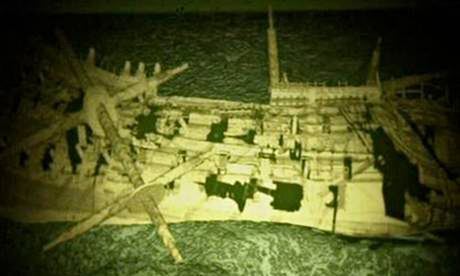 A CGI reconstruction of the London wreck. Photograph: Touch Productions Archaeologists will embark on an emergency excavation of one of Britain's most important shipwrecks on Sunday after discovering it is deteriorating at alarming speed because of the warmer waters caused by climate change.The once-mighty 17th-century vessel, named the London, has lain in the muddy silt of the Thames estuary off the Essex coast near Southend-on-Sea for 350 years.Built in 1656, she was in a convoy that transported Charles II from the Netherlands to restore him to his throne after Oliver Cromwell's death in 1658. One of the most illustrious ships of her day, her remains are now a time capsule of the 17th century.English Heritage, the government advisory body, has commissioned Cotswold Archaeology to carry out a major excavation.
A CGI reconstruction of the London wreck. Photograph: Touch Productions Archaeologists will embark on an emergency excavation of one of Britain's most important shipwrecks on Sunday after discovering it is deteriorating at alarming speed because of the warmer waters caused by climate change.The once-mighty 17th-century vessel, named the London, has lain in the muddy silt of the Thames estuary off the Essex coast near Southend-on-Sea for 350 years.Built in 1656, she was in a convoy that transported Charles II from the Netherlands to restore him to his throne after Oliver Cromwell's death in 1658. One of the most illustrious ships of her day, her remains are now a time capsule of the 17th century.English Heritage, the government advisory body, has commissioned Cotswold Archaeology to carry out a major excavation.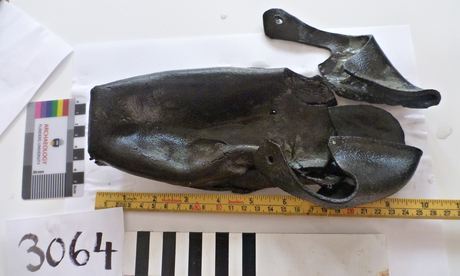 A latchet shoe recovered from the wreck of the London by diver Steven Ellis, who said the Thames silt kept artefacts in good condition. Photograph: Steven Ellis Mark Dunkley, a marine archaeologist at English Heritage, told the Guardian: "It's rare for wooden shipwrecks of this age and older to survive to this extent." The hundreds of surviving wrecks are mostly later iron and steel ships.Asked why the wreck is deteriorating now after 350 years, he said: "Through human-induced climate change, warmer water is moving northwards. That's allowing the migration of warm-water invasive species." He spoke of the need for action to stop warm-water ship-boring organisms eating away at timber and organic artefacts and prevent loose objects being dispersed.The London met her end in 1665 when she suffered a mysterious gunpowder explosion. More than 300 lives were lost in a tragedy recorded by Samuel Pepys, the diarist and secretary to the Navy Board: "A little a' this side the buoy of the Nower [Nore], she suddenly blew up."About 24 [men] and a woman that were in the round-house and coach saved; the rest, being above 300, drowned: the ship breaking all in pieces, with 80 pieces of brass ordnance."The diarist John Evelyn also lamented "the poor orphans and widows" left behind.
A latchet shoe recovered from the wreck of the London by diver Steven Ellis, who said the Thames silt kept artefacts in good condition. Photograph: Steven Ellis Mark Dunkley, a marine archaeologist at English Heritage, told the Guardian: "It's rare for wooden shipwrecks of this age and older to survive to this extent." The hundreds of surviving wrecks are mostly later iron and steel ships.Asked why the wreck is deteriorating now after 350 years, he said: "Through human-induced climate change, warmer water is moving northwards. That's allowing the migration of warm-water invasive species." He spoke of the need for action to stop warm-water ship-boring organisms eating away at timber and organic artefacts and prevent loose objects being dispersed.The London met her end in 1665 when she suffered a mysterious gunpowder explosion. More than 300 lives were lost in a tragedy recorded by Samuel Pepys, the diarist and secretary to the Navy Board: "A little a' this side the buoy of the Nower [Nore], she suddenly blew up."About 24 [men] and a woman that were in the round-house and coach saved; the rest, being above 300, drowned: the ship breaking all in pieces, with 80 pieces of brass ordnance."The diarist John Evelyn also lamented "the poor orphans and widows" left behind.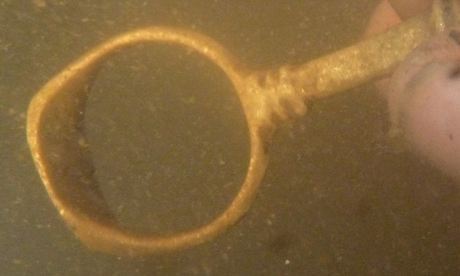 Initial finds include personal items such as this combined signet ring and pipe-tamper, as well as ship's fittings including cannonballs and an anchor cable. Photograph: Carol Ellis The archaeologists are collaborating with Steven Ellis, a Thames estuary diver, who has been granted the government licence.He too spoke of the need for action. During initial test dives, he spotted "loads of shoe soles". When he returned, they had been washed away, he said.Ellis did, however, find a complete shoe that looked astonishingly modern, in superb condition considering its age. He said: "The Thames has got so much silt. That's why everything is in such good nick."His other initial finds included personal items such as a bronze signet ring and clay pipes, as well as navigational dividers, buckets, pots and cooking utensils. He retrieved ship's fixtures and fittings such as door latches, an anchor cable and cannonballs.Parametric sonar data suggest buried deposits beyond the visible remains. Other tests have uncovered extremely unusual female human remains.The excavation will be complex. Though the wreck is only up to 18 metres deep, visibility is poor. Ellis said: "On a good day, you've got perhaps half a metre."There are also strong currents and the site is at the edge of a shipping lane. "It makes it a little more hairy than most dives," he said.
Initial finds include personal items such as this combined signet ring and pipe-tamper, as well as ship's fittings including cannonballs and an anchor cable. Photograph: Carol Ellis The archaeologists are collaborating with Steven Ellis, a Thames estuary diver, who has been granted the government licence.He too spoke of the need for action. During initial test dives, he spotted "loads of shoe soles". When he returned, they had been washed away, he said.Ellis did, however, find a complete shoe that looked astonishingly modern, in superb condition considering its age. He said: "The Thames has got so much silt. That's why everything is in such good nick."His other initial finds included personal items such as a bronze signet ring and clay pipes, as well as navigational dividers, buckets, pots and cooking utensils. He retrieved ship's fixtures and fittings such as door latches, an anchor cable and cannonballs.Parametric sonar data suggest buried deposits beyond the visible remains. Other tests have uncovered extremely unusual female human remains.The excavation will be complex. Though the wreck is only up to 18 metres deep, visibility is poor. Ellis said: "On a good day, you've got perhaps half a metre."There are also strong currents and the site is at the edge of a shipping lane. "It makes it a little more hairy than most dives," he said.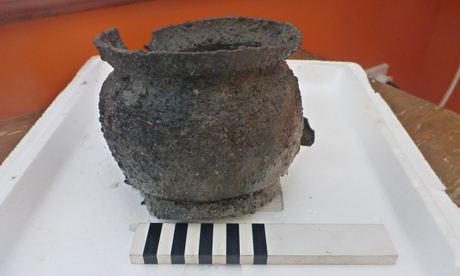 A pewter pot recovered from the London. Archaeologists say warm-water organisms, brought north by climate change, will eat away at the wreck. Photograph: Steven Ellis The London's final resting place was only confirmed in 2005. She is one of only 49 ships protected under the Protection of Wrecks Act in England, an indication of her importance.Dunkley said: "Part of the excitement for us, as archaeologists, is to share with those people that can't access the London with a scuba tank."The wreck offers insights into the navy when England was emerging as a global power, he added. "It allows us to share our understanding of how people lived, fought and died on this class of ship. The London fills a gap in our understanding of ship technology and ship construction."The vessel was fitted for war when she blew up. The women on board were possibly officers' relatives. Perhaps they would have disembarked as the ship would have been fully prepared for war, Dunkley suggests. "Pepys talks of ladies being on board. We don't know whether they were guests masquerading as crew members, which happened in Admiral Nelson's time. Or whether they were guests of the lower decks."Although she blew up, the ship seems to be pretty complete, lying in two sections. She was once 37 metres long by 12 metres wide.Divers will excavate the bow, the hold, the main gun deck and the carpenter's and boatswain's storerooms. Finds recovered from the site will be curated, published and displayed by Southend Museums Service. http://www.theguardian.com/science/2014/may/16/divers-emergency-thames-shipwreck-climate-change-london
A pewter pot recovered from the London. Archaeologists say warm-water organisms, brought north by climate change, will eat away at the wreck. Photograph: Steven Ellis The London's final resting place was only confirmed in 2005. She is one of only 49 ships protected under the Protection of Wrecks Act in England, an indication of her importance.Dunkley said: "Part of the excitement for us, as archaeologists, is to share with those people that can't access the London with a scuba tank."The wreck offers insights into the navy when England was emerging as a global power, he added. "It allows us to share our understanding of how people lived, fought and died on this class of ship. The London fills a gap in our understanding of ship technology and ship construction."The vessel was fitted for war when she blew up. The women on board were possibly officers' relatives. Perhaps they would have disembarked as the ship would have been fully prepared for war, Dunkley suggests. "Pepys talks of ladies being on board. We don't know whether they were guests masquerading as crew members, which happened in Admiral Nelson's time. Or whether they were guests of the lower decks."Although she blew up, the ship seems to be pretty complete, lying in two sections. She was once 37 metres long by 12 metres wide.Divers will excavate the bow, the hold, the main gun deck and the carpenter's and boatswain's storerooms. Finds recovered from the site will be curated, published and displayed by Southend Museums Service. http://www.theguardian.com/science/2014/may/16/divers-emergency-thames-shipwreck-climate-change-london

Dalya Alberge
 A CGI reconstruction of the London wreck. Photograph: Touch Productions Archaeologists will embark on an emergency excavation of one of Britain's most important shipwrecks on Sunday after discovering it is deteriorating at alarming speed because of the warmer waters caused by climate change.The once-mighty 17th-century vessel, named the London, has lain in the muddy silt of the Thames estuary off the Essex coast near Southend-on-Sea for 350 years.Built in 1656, she was in a convoy that transported Charles II from the Netherlands to restore him to his throne after Oliver Cromwell's death in 1658. One of the most illustrious ships of her day, her remains are now a time capsule of the 17th century.English Heritage, the government advisory body, has commissioned Cotswold Archaeology to carry out a major excavation.
A CGI reconstruction of the London wreck. Photograph: Touch Productions Archaeologists will embark on an emergency excavation of one of Britain's most important shipwrecks on Sunday after discovering it is deteriorating at alarming speed because of the warmer waters caused by climate change.The once-mighty 17th-century vessel, named the London, has lain in the muddy silt of the Thames estuary off the Essex coast near Southend-on-Sea for 350 years.Built in 1656, she was in a convoy that transported Charles II from the Netherlands to restore him to his throne after Oliver Cromwell's death in 1658. One of the most illustrious ships of her day, her remains are now a time capsule of the 17th century.English Heritage, the government advisory body, has commissioned Cotswold Archaeology to carry out a major excavation. A latchet shoe recovered from the wreck of the London by diver Steven Ellis, who said the Thames silt kept artefacts in good condition. Photograph: Steven Ellis Mark Dunkley, a marine archaeologist at English Heritage, told the Guardian: "It's rare for wooden shipwrecks of this age and older to survive to this extent." The hundreds of surviving wrecks are mostly later iron and steel ships.Asked why the wreck is deteriorating now after 350 years, he said: "Through human-induced climate change, warmer water is moving northwards. That's allowing the migration of warm-water invasive species." He spoke of the need for action to stop warm-water ship-boring organisms eating away at timber and organic artefacts and prevent loose objects being dispersed.The London met her end in 1665 when she suffered a mysterious gunpowder explosion. More than 300 lives were lost in a tragedy recorded by Samuel Pepys, the diarist and secretary to the Navy Board: "A little a' this side the buoy of the Nower [Nore], she suddenly blew up."About 24 [men] and a woman that were in the round-house and coach saved; the rest, being above 300, drowned: the ship breaking all in pieces, with 80 pieces of brass ordnance."The diarist John Evelyn also lamented "the poor orphans and widows" left behind.
A latchet shoe recovered from the wreck of the London by diver Steven Ellis, who said the Thames silt kept artefacts in good condition. Photograph: Steven Ellis Mark Dunkley, a marine archaeologist at English Heritage, told the Guardian: "It's rare for wooden shipwrecks of this age and older to survive to this extent." The hundreds of surviving wrecks are mostly later iron and steel ships.Asked why the wreck is deteriorating now after 350 years, he said: "Through human-induced climate change, warmer water is moving northwards. That's allowing the migration of warm-water invasive species." He spoke of the need for action to stop warm-water ship-boring organisms eating away at timber and organic artefacts and prevent loose objects being dispersed.The London met her end in 1665 when she suffered a mysterious gunpowder explosion. More than 300 lives were lost in a tragedy recorded by Samuel Pepys, the diarist and secretary to the Navy Board: "A little a' this side the buoy of the Nower [Nore], she suddenly blew up."About 24 [men] and a woman that were in the round-house and coach saved; the rest, being above 300, drowned: the ship breaking all in pieces, with 80 pieces of brass ordnance."The diarist John Evelyn also lamented "the poor orphans and widows" left behind. Initial finds include personal items such as this combined signet ring and pipe-tamper, as well as ship's fittings including cannonballs and an anchor cable. Photograph: Carol Ellis The archaeologists are collaborating with Steven Ellis, a Thames estuary diver, who has been granted the government licence.He too spoke of the need for action. During initial test dives, he spotted "loads of shoe soles". When he returned, they had been washed away, he said.Ellis did, however, find a complete shoe that looked astonishingly modern, in superb condition considering its age. He said: "The Thames has got so much silt. That's why everything is in such good nick."His other initial finds included personal items such as a bronze signet ring and clay pipes, as well as navigational dividers, buckets, pots and cooking utensils. He retrieved ship's fixtures and fittings such as door latches, an anchor cable and cannonballs.Parametric sonar data suggest buried deposits beyond the visible remains. Other tests have uncovered extremely unusual female human remains.The excavation will be complex. Though the wreck is only up to 18 metres deep, visibility is poor. Ellis said: "On a good day, you've got perhaps half a metre."There are also strong currents and the site is at the edge of a shipping lane. "It makes it a little more hairy than most dives," he said.
Initial finds include personal items such as this combined signet ring and pipe-tamper, as well as ship's fittings including cannonballs and an anchor cable. Photograph: Carol Ellis The archaeologists are collaborating with Steven Ellis, a Thames estuary diver, who has been granted the government licence.He too spoke of the need for action. During initial test dives, he spotted "loads of shoe soles". When he returned, they had been washed away, he said.Ellis did, however, find a complete shoe that looked astonishingly modern, in superb condition considering its age. He said: "The Thames has got so much silt. That's why everything is in such good nick."His other initial finds included personal items such as a bronze signet ring and clay pipes, as well as navigational dividers, buckets, pots and cooking utensils. He retrieved ship's fixtures and fittings such as door latches, an anchor cable and cannonballs.Parametric sonar data suggest buried deposits beyond the visible remains. Other tests have uncovered extremely unusual female human remains.The excavation will be complex. Though the wreck is only up to 18 metres deep, visibility is poor. Ellis said: "On a good day, you've got perhaps half a metre."There are also strong currents and the site is at the edge of a shipping lane. "It makes it a little more hairy than most dives," he said. A pewter pot recovered from the London. Archaeologists say warm-water organisms, brought north by climate change, will eat away at the wreck. Photograph: Steven Ellis The London's final resting place was only confirmed in 2005. She is one of only 49 ships protected under the Protection of Wrecks Act in England, an indication of her importance.Dunkley said: "Part of the excitement for us, as archaeologists, is to share with those people that can't access the London with a scuba tank."The wreck offers insights into the navy when England was emerging as a global power, he added. "It allows us to share our understanding of how people lived, fought and died on this class of ship. The London fills a gap in our understanding of ship technology and ship construction."The vessel was fitted for war when she blew up. The women on board were possibly officers' relatives. Perhaps they would have disembarked as the ship would have been fully prepared for war, Dunkley suggests. "Pepys talks of ladies being on board. We don't know whether they were guests masquerading as crew members, which happened in Admiral Nelson's time. Or whether they were guests of the lower decks."Although she blew up, the ship seems to be pretty complete, lying in two sections. She was once 37 metres long by 12 metres wide.Divers will excavate the bow, the hold, the main gun deck and the carpenter's and boatswain's storerooms. Finds recovered from the site will be curated, published and displayed by Southend Museums Service. http://www.theguardian.com/science/2014/may/16/divers-emergency-thames-shipwreck-climate-change-london
A pewter pot recovered from the London. Archaeologists say warm-water organisms, brought north by climate change, will eat away at the wreck. Photograph: Steven Ellis The London's final resting place was only confirmed in 2005. She is one of only 49 ships protected under the Protection of Wrecks Act in England, an indication of her importance.Dunkley said: "Part of the excitement for us, as archaeologists, is to share with those people that can't access the London with a scuba tank."The wreck offers insights into the navy when England was emerging as a global power, he added. "It allows us to share our understanding of how people lived, fought and died on this class of ship. The London fills a gap in our understanding of ship technology and ship construction."The vessel was fitted for war when she blew up. The women on board were possibly officers' relatives. Perhaps they would have disembarked as the ship would have been fully prepared for war, Dunkley suggests. "Pepys talks of ladies being on board. We don't know whether they were guests masquerading as crew members, which happened in Admiral Nelson's time. Or whether they were guests of the lower decks."Although she blew up, the ship seems to be pretty complete, lying in two sections. She was once 37 metres long by 12 metres wide.Divers will excavate the bow, the hold, the main gun deck and the carpenter's and boatswain's storerooms. Finds recovered from the site will be curated, published and displayed by Southend Museums Service. http://www.theguardian.com/science/2014/may/16/divers-emergency-thames-shipwreck-climate-change-london

Published on May 18, 2014 07:11
May 17, 2014
History Trivia - Principality of Antioch, a crusader state, falls to the Mamluk Sultan Baibars
May 18
 1096 Crusaders massacred Jews of Worms, Germany.
1096 Crusaders massacred Jews of Worms, Germany.
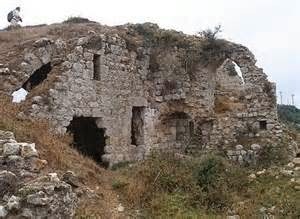
1268 The Principality of Antioch, a crusader state, fell to the Mamluk Sultan Baibars in the Battle of Antioch.
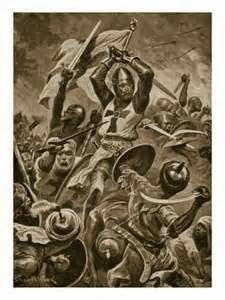
1291 the Crusaders abandoned Tyre to the Moslems, the prelude to the end of the final Crusade.

 1096 Crusaders massacred Jews of Worms, Germany.
1096 Crusaders massacred Jews of Worms, Germany.
1268 The Principality of Antioch, a crusader state, fell to the Mamluk Sultan Baibars in the Battle of Antioch.

1291 the Crusaders abandoned Tyre to the Moslems, the prelude to the end of the final Crusade.

Published on May 17, 2014 13:22
History Trivia - Anne of Denmark crowned Queen of Scotland.
May 17

352 Liberius elected Pope, replacing Julius I.

884 St Adrian III began his reign as Catholic Pope.

1220 King Henry III of England Crowned for a second time. Henry, who had been crowned at age nine four years earlier, underwent a second coronation at Westminster.

1521 Edward Stafford, 3rd Duke of Buckingham, was executed for treason.
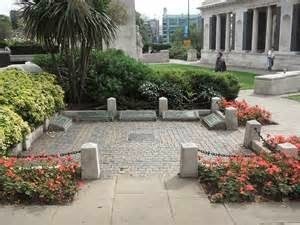
1536 George Boleyn, Viscount Rochford and four other men were executed for treason.

1590 Anne of Denmark was crowned Queen of Scotland.


352 Liberius elected Pope, replacing Julius I.

884 St Adrian III began his reign as Catholic Pope.

1220 King Henry III of England Crowned for a second time. Henry, who had been crowned at age nine four years earlier, underwent a second coronation at Westminster.

1521 Edward Stafford, 3rd Duke of Buckingham, was executed for treason.

1536 George Boleyn, Viscount Rochford and four other men were executed for treason.

1590 Anne of Denmark was crowned Queen of Scotland.

Published on May 17, 2014 04:52
May 16, 2014
FACEBOOK EVENT Saturday, May 17, 2014 2:00 - 4:00 p.m. - Waiting for Harvey by Lydia North
BOOK LAUNCH - Waiting for Harvey by Lydia North
 https://www.facebook.com/events/312918995531998/
https://www.facebook.com/events/312918995531998/
Erik went into the woods of northern Maine for a vacation. He planned to enjoy three weeks of quiet serenity. But in the cabin nothing was what he expected and his life would never be the same.
As winter settles over the region Erik begins to question whether he will get away from the woods alive.
The woods of Maine belong to the spirits who live there. When the whispering begins... RUN!
'Waiting for Harvey' will be available May 17th at only $0.99, £0.77 or CDN$1.10 on Kindle & Nook and $9.99 in paperback.
http://www.amazon.com/Waiting-Harvey-Spirits-Maine-Lydia-ebook/dp/B00KAGI30S
 Book Review: I finished reading Waiting for Harvey a little bit ago and I was barely able to put it down the whole time reading it. It was soooooo good. The book had me captured from the very beginning all the way till the end. The writing is fantastic and is a real page turner. I love the way the characters were portrayed...I felt for each and every one of them. I loved reading about Harvey's history and what happened to him. There were a lot of times that I was thinking, "oh my gosh what is going to happen now". This is the first ghost story type book that I think I have ever read and I just totally loved it. You are all in for a treat with this book.
Book Review: I finished reading Waiting for Harvey a little bit ago and I was barely able to put it down the whole time reading it. It was soooooo good. The book had me captured from the very beginning all the way till the end. The writing is fantastic and is a real page turner. I love the way the characters were portrayed...I felt for each and every one of them. I loved reading about Harvey's history and what happened to him. There were a lot of times that I was thinking, "oh my gosh what is going to happen now". This is the first ghost story type book that I think I have ever read and I just totally loved it. You are all in for a treat with this book.
Posted by shannan williams at 6:56 PM http://shannanwilliamsworld.blogspot.com/2014/05/review-for-waiting-for-harvey-by-lydia.html
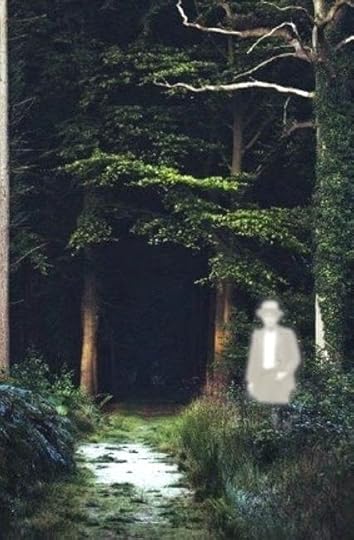

 https://www.facebook.com/events/312918995531998/
https://www.facebook.com/events/312918995531998/Erik went into the woods of northern Maine for a vacation. He planned to enjoy three weeks of quiet serenity. But in the cabin nothing was what he expected and his life would never be the same.
As winter settles over the region Erik begins to question whether he will get away from the woods alive.
The woods of Maine belong to the spirits who live there. When the whispering begins... RUN!
'Waiting for Harvey' will be available May 17th at only $0.99, £0.77 or CDN$1.10 on Kindle & Nook and $9.99 in paperback.
http://www.amazon.com/Waiting-Harvey-Spirits-Maine-Lydia-ebook/dp/B00KAGI30S
 Book Review: I finished reading Waiting for Harvey a little bit ago and I was barely able to put it down the whole time reading it. It was soooooo good. The book had me captured from the very beginning all the way till the end. The writing is fantastic and is a real page turner. I love the way the characters were portrayed...I felt for each and every one of them. I loved reading about Harvey's history and what happened to him. There were a lot of times that I was thinking, "oh my gosh what is going to happen now". This is the first ghost story type book that I think I have ever read and I just totally loved it. You are all in for a treat with this book.
Book Review: I finished reading Waiting for Harvey a little bit ago and I was barely able to put it down the whole time reading it. It was soooooo good. The book had me captured from the very beginning all the way till the end. The writing is fantastic and is a real page turner. I love the way the characters were portrayed...I felt for each and every one of them. I loved reading about Harvey's history and what happened to him. There were a lot of times that I was thinking, "oh my gosh what is going to happen now". This is the first ghost story type book that I think I have ever read and I just totally loved it. You are all in for a treat with this book.Posted by shannan williams at 6:56 PM http://shannanwilliamsworld.blogspot.com/2014/05/review-for-waiting-for-harvey-by-lydia.html


Published on May 16, 2014 06:55




